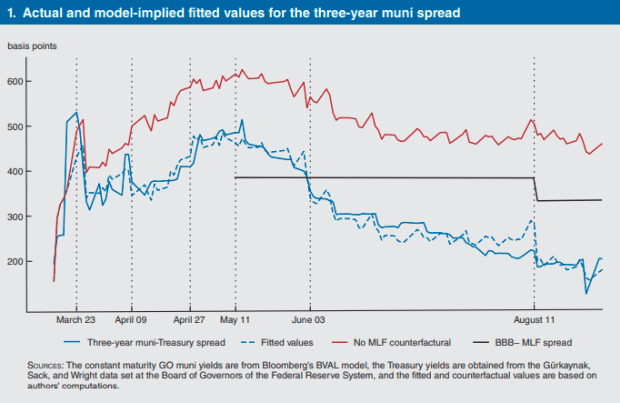As the Federal Reserve takes initial steps toward dialing back its pandemic response programs, its tool for helping municipalities is being judged a success, at least for low-rated Illinois, and a possible addition to future crisis toolkits.
The central bank’s Municipal Liquidity Facility was announced on April 9, 2020, to help cities and states weather what then seemed a burgeoning crisis. With local economies shuttered, tax and fee revenues came to a standstill, even as public health and safety costs were skyrocketing.
Read: The coronavirus crisis is costing states and locals hundreds of billions, analysis finds
Investors were selling municipal bonds at a record pace, and concerns about liquidity — not solvency — swirled.
The MLF was meant to be a lender-of-last-resort for local government entities. It was authorized to buy up to $500 billion in short-term notes until the end of 2020. Through the Fed’s pricing for the facility, borrowers would pay a “penalty” — a fixed interest-rate spread over comparable market rates, determined in part by their credit ratings.
“Market participants have been viewing the MLF as a backstop because of these terms,” notes a Chicago Fed paper that assesses how well the MLF worked for the state of Illinois, which became the first municipal issuer to sell bonds to the facility.
In the spring of 2020, Illinois was the lowest-rated U.S. state, perched only one notch into investment-grade territory. Using the MLF, even with the penalty, was a better option than going directly to the credit markets. The state sold $1.2 billion in cash-flow notes in June at a rate more than 100 basis points lower than yields on comparable notes it had issued in the market one month earlier.
“As of October 30, Illinois muni yields are about 300 bps lower than they were in mid-March,” the Fed report notes. “The mere ability to issue new debt and the potential savings from debt refinancing are important options for authorities that are trying to overcome 2020 shortfalls and alleviate the burden of projected 2021 budget deficits without reducing essential services.”
The report shows how each Fed announcement about each successive change to the MLF had an impact on Illinois bond yields. The figure above shows the spread between three-year bond yields from Illinois and from the U.S. Treasury was reduced by about 220 bps.
“To illustrate the overall effect of the Fed actions, figure 1 displays in red the projected evolution of the three-year spread in the absence of the Fed announcements. It is evident that in April and May without the safety net of the MLF, the spread would have continued to deteriorate, reaching a peak of 600 bps, and would still be almost 300 bps higher than its pre-Covid levels.”
See: Federal stimulus is a ‘lifeline’ for communities whacked by the corona-crisis, as scars of 2008 linger






